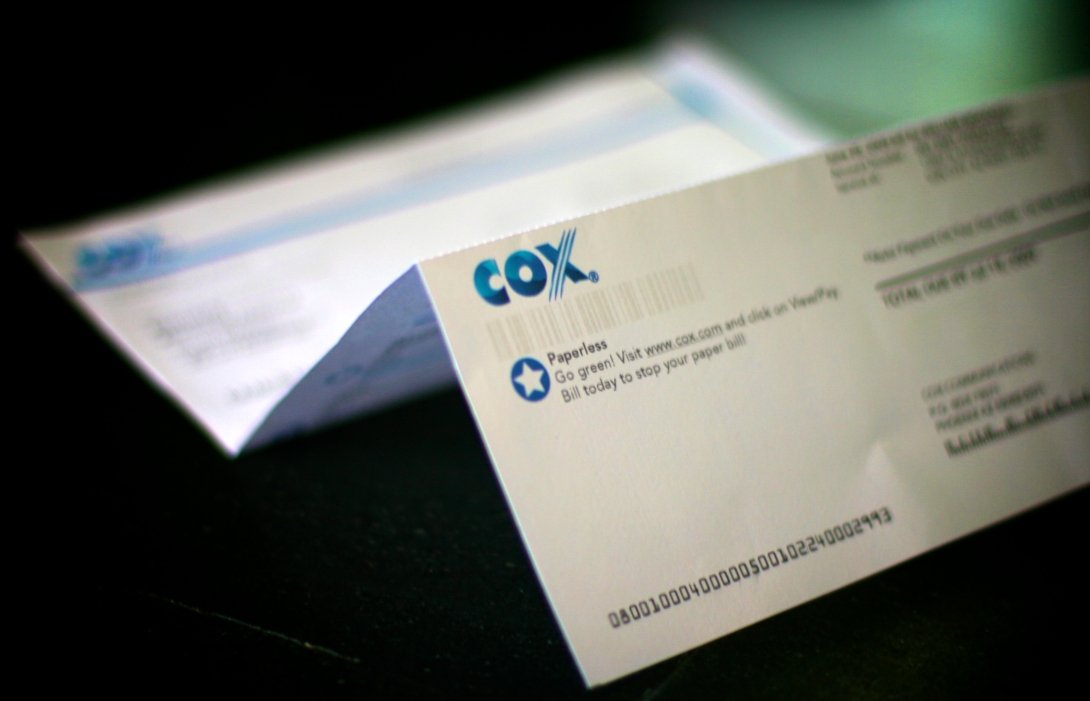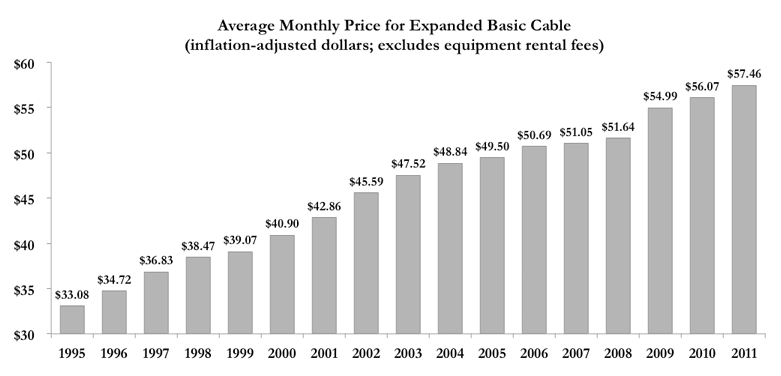Why Your Broadband Bill Is So High

Flickr user Eric Norris
Have you ever sat with your TV remote, aimlessly flipping through hundreds of channels you have no interest in, and wondered, “Why do I have to pay for all this?”
Have you ever looked at your cable bill and thought about cutting the cord — only to realize that there are a few key shows or live sporting events you really want to watch, but can’t find online?
Do you ever wonder, with all the advances in online technology and changes in how people view content, why the TV industry still makes us pay so much for so many channels — and doesn’t simply allow us to watch what we want, when we want and where we want it?
The answer, of course, is money.
Or rather, the desire powerful cable distributors (like Comcast and Time Warner Cable) and programmers (like Viacom and News Corp.) have to take as much of your money as possible.
The rising cost of cable
This cable cabal forces people to pay more and more for channels they don’t want just to get the few shows or events they do want to watch. This more-than-you-can-eat bundled-channel business model has been a never-ending gravy train for the cable cabal — and a serious drag on consumers’ wallets.
Since Congress deregulated the cable industry in the mid-1990s, prices have increased at nearly three times the rate of inflation. And despite the growth in online options, this trend is only getting worse. Since 2008, cable prices have climbed an average of 5 percent a year, more than three times the rate of inflation.

Source: FCC and Free Press research
While no one is willing to take credit for these out-of-control price increases, there is plenty of blame to go around.
Multichannel distributors: happy, profitable middlemen
The first suspect is your local cable company, the happy and profitable middleman who is probably also your broadband provider.
While the recent recession took a brutal toll on many businesses, the cable, satellite and telco TV multichannel distributors kept raking in the dough.
From 2007–2011, the multichannel distributors collectively increased the price of expanded basic cable service by 22 percent.
These rate hikes and other fee increases helped the industry boost its video-service revenues by 27 percent, an impressive performance considering that during this same period there was almost no growth in the total number of pay-TV subscribers.
Indeed, the traditional wired cable providers’ total video revenues grew by 11 percent during this timeframe — even though these companies lost 11 percent of their subscribers.
But these distributors are just that — distributors of someone else’s programming.
As the owners of that programming raise their fees, distributors either have to pass those higher costs along to their subscribers or accept lower profits on video. And for many years, the distributors simply passed along all of these increased programming costs.
However, in recent years, as programming fees ballooned in the face of rate-increase-weary consumers, the distributors have been forced to absorb at least a portion of these increased programming costs.
But instead of absorbing these higher costs themselves (in the form of lower profits), cable companies are using their captive broadband customers to help shoulder the burden.
Because the wired providers bundle video service with broadband service, they’re able to spread the programming-cost increases across each service in the bundle.
And the tactic of using broadband to make up for increased programming costs is working brilliantly (for the cable companies, that is).
For example, from 2007–2012, Comcast’s video-profit margins declined by one-fifth. But because it increased its broadband profit margins, the company’s total profits rose.
Basically, cable companies are playing a little game here. They’re using broadband — a highly profitable utility subject to very little competition — to cross-subsidize video and keep total revenue and subscribership numbers high.
This is not some trivial trend in the tech market.
Broadband is an indispensible utility for most people in the United States and a major part of our national economy. The phone and cable companies have long used their monopoly status to charge monopoly-level prices for their services.
And now people are being asked to pay still more for broadband service when its price should be dropping. Customers are sending increasingly hefty checks to cable channels, which pocket a healthy profit before sending the rest along to programming conglomerates and monopoly sports leagues.
In the cabal, everybody — except the customer — wins.
To learn more check out Free Press’ new report, Combating the Cable Cabal: How to Fix America’s Broken Video Market.